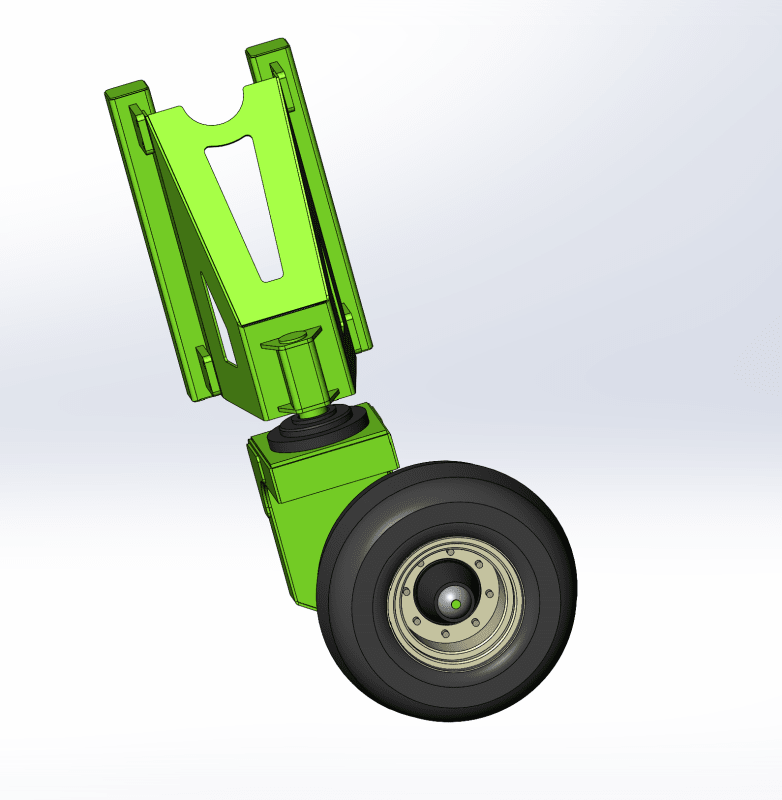Hello gentlemen,
I fairly new to the forum and I am not an engineer just trying to learn as much as I can and grow my skills in the drafting area.
I have been tasked with figuring out why we are having such a hard time making this crazy wheel turn with the machine.
(I have attached a picture.) This is off a stockyard elevator where there are 2 wheels on one side that rotate with hydraulic cylinders and drive with some planetary wheel hubs.
The other side of the elevator has two crazy wheels like the one I attached, the machine weight is about 14000lbs according to SolidWorks. That is pretty accurate to what we physically have.
Now I was doing some research and I may be wrong but I found that increasing the wheel offset should be easier to rotate. Can you guys help me determine whether this is true and what I might be able to do to make this system work better. Also the Wheel is a 26x12 turf master form Eastbay tire. Please let me know if there are other things I may need to consider.
Thanks in advance!
I fairly new to the forum and I am not an engineer just trying to learn as much as I can and grow my skills in the drafting area.
I have been tasked with figuring out why we are having such a hard time making this crazy wheel turn with the machine.
(I have attached a picture.) This is off a stockyard elevator where there are 2 wheels on one side that rotate with hydraulic cylinders and drive with some planetary wheel hubs.
The other side of the elevator has two crazy wheels like the one I attached, the machine weight is about 14000lbs according to SolidWorks. That is pretty accurate to what we physically have.
Now I was doing some research and I may be wrong but I found that increasing the wheel offset should be easier to rotate. Can you guys help me determine whether this is true and what I might be able to do to make this system work better. Also the Wheel is a 26x12 turf master form Eastbay tire. Please let me know if there are other things I may need to consider.
Thanks in advance!

